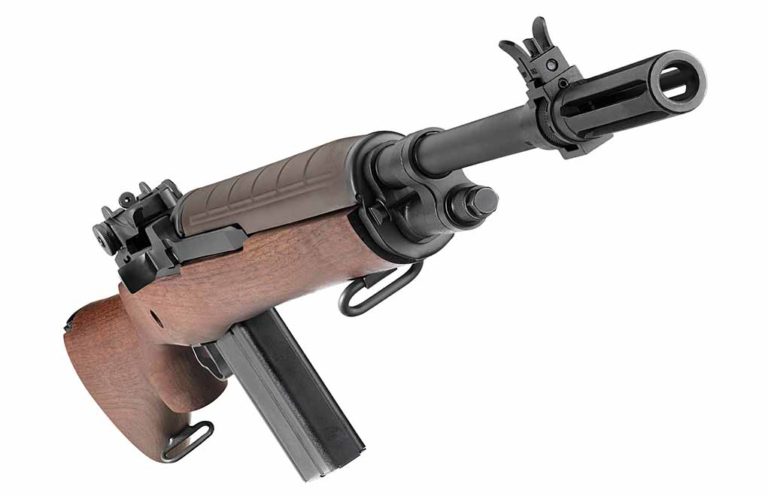

While the short service life of the M14 should have made it a military footnote, the design remains as popular as ever thanks in part to the Springfield Armory M1A.
What Are The Current M1A Variations:
- M1A Standard Issue
- M1A National Match
- M1A Super Match
- M1A Loaded
- M1A Scout Squad
- M1A SOCOM
Short service typically doesn’t equate to legendary. The M14 is a decided exception.
Among the briefest runs (1957-1964) as the American military’s main battle rifle, the steel and birch (sometimes walnut) beast has all the makings of a historical footnote. Today, the rifle spurs debate hot enough to cook off a freshly chambered round. Did the M14 get the short end of the stick in as the country’s infantry spear point? Or only was it only there due to politics and nostalgia? When not flaming each other in the comment section of a post, honestly, both sides have valid points to the worthiness of the rifle. No matter what banner you hoist in the fray, there’s no denying the M14 won’t soon be forgotten.
Barbershop-worthy ponderations fuel one part of the rifle’s longevity. Springfield Armory, the other. Cornerstone to the gunmaker’s catalog, its semi-auto rendition of the M14—the equally iconic M1A—keeps the legend alive. And even if you’re a dyed-in-the-wool AR, AK, FAL, G3, or what-have-you man or woman, if you’re honest with yourself, you’d make room in your gun safe for this throwback icon.
A Much Too Small Thumbnail Of The M14
Blood blue as a Boston brahmin, the M14 is a direct descendant of perhaps America’s most cherished battle rifle—the M1 Garand. Which to some extent may have also set it up for bumpy road from the start. When your pop whipped the Germans and Japanese in one fell swoop and has battles such as Normandy, Bastogne, Monte Cassino, Tarawa and Iwo Jima on his resume, it’s fair to say you have a lot to live up to. For the most part, the M14 did a solid job stepping into the Garand’s shoes. Confirmed kills at 500-yard-plus, the M14 was an out-and-out killer in a studied marksman’s hands and as reliable as its predecessor. “Jam proof” is a bridge too far, but overall it could chew through ammo in the nastiest of circumstances. Leave it at that the M14 would have fared well on most counts.

Except replacing the “greatest battle implement ever devised” was only the start. The M14 was set up with an almost impossible task: take the reins not only from the Garand, but a host of other proven weapons systems—M2 Carbine, M3 submachine gun and the Browning Automatic Rifle (BAR), among others. Disparate guns for disparate purposes. One gun to rule them all was only going to lead to disappointment. The M14 did.
First off, to understand why the rifle succeeded and struggled we have to look at exactly what it was. And what it was was an improved M1 Garand. Built around the gas-operated rotating bolt similar, but not a mirror of the Garand’s, the rifle proved extremely reliable. To this, the Ordnance Department added a removable box magazine—a 20-round job that rocked in similarly to an AK—which gave it more capacity, as well as, theoretically, a faster reload time. It also boasted an excellent 22-inch barrel and was chambered for 7.62x51mm NATO, a ballistic twin to the Garand’s .30-06 Springfield, but a more efficient cartridge in a semi-auto/full-auto system. Adding on the same rear aperture sight and buttstock as the M1 meant you knew the M14 if you knew the Garand, and found some much-wanted upgrades along the way.
The flipside, it was large, weighing more than 10 pounds loaded. And more notoriously, it was select-fire. The rub with select-fire, the M14 was about as agreeable as an angry badger, particularly fired from an unsupported position. The 7.62 is a rifle cartridge, not an intermediate rifle cartridge, but a full-fledged, centerfire rifle cartridge fit for taking down any North American game or enemy soldiers and is still favored by many precision shooters. Stopping power abounds, and so does recoil. When flipped over to rat-a-tat-tat and moving some 750 bullets downrange per minute, it proved more than the average soldier could wield to any effect. The first shot, yeah, it was on target. After that, it’s anyone’s guess—usually high and to the right, ineffectively or dangerously so. Perhaps this is why the selector of the M14 takes such conscious effort to dial to full auto.

So yes, it could engage close targets with a high volume of fire—what study after study coming out of World War II said was key and was reinforced in the confines of Vietnam jungles. But with impact to influence a firefight, that’s negligible. Certainly, in this facet, it struggled against the dominant arm of the day—the Soviet AK-47. Plus, .30-caliber isn’t exactly peanuts to spray around the countryside and adds a whole heap of weight to a kit.
So, was that it? Did weight and disagreeableness in full auto kill the M14’s military career? Was 7.62 too expensive to feed a proverbial bullet hose? Did Defense Secretary Robert McNamara hit on to something about wood and steel being the wrong material for a jungle fight? Or did just plain politics (of which there was a lot) lead to the demise of the M14 and the adoption of what would become known as the M16?
Honestly, there’s a book's worth of parsing out in those questions and about a metric ton of other queries. For our purposes, it's fair to say the M14 succeeded in some areas, labored in others, but for the most part, proved a legitimate improvement of the M1 Garand. So much so that it found a second life in the recent conflicts in Afghanistan and Iraq, where long-range engagements became more common. And it still has civilians pining for it today. In the latter case, Springfield Armory is owed a debt of gratitude.
Born Again As The M1A
When McNamara switched the military’s horses, he did so mid-gallop. All the branches accepted the M16 in 1964 and all M14 purchases were cut off simultaneously, which left a heap of spare parts for the dispossessed rifle. Around a decade later, an enterprising company figured there was money to be made in all those M14 bits and pieces. Springfield Armory (the company) couldn’t have been more correct.
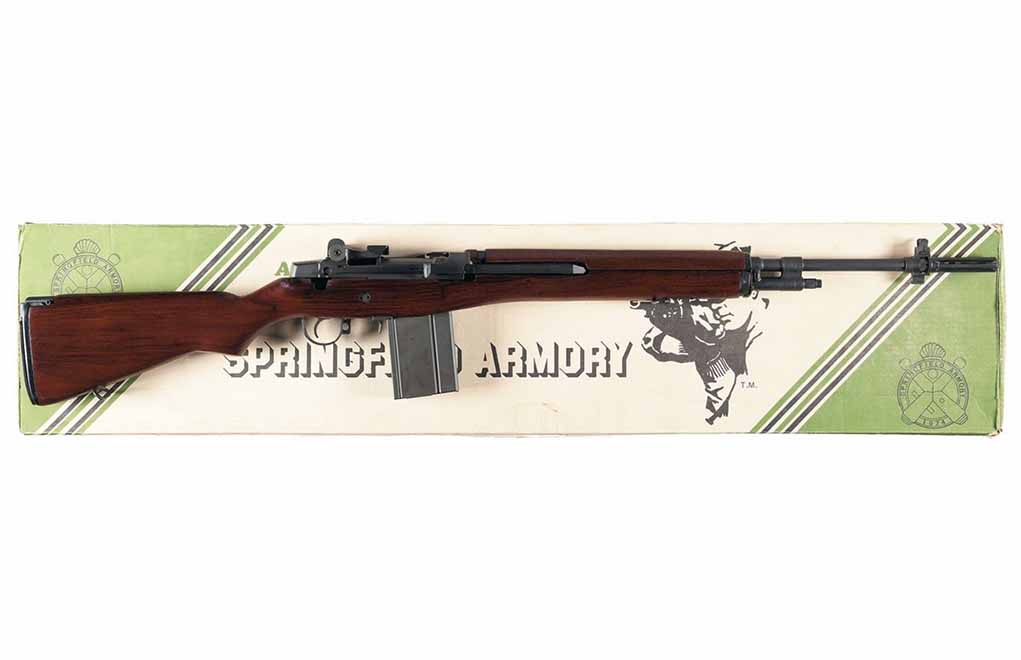
The Springfield M1A tapped into the lore of the M14, a rifle, once accurized, that was up to snuff of the original National Match iterations of days gone by. Of course, Federal firearms regulations being what they were and are, the accurate irons underwent one major modification—they are semi-automatic, so not true-to-life M14 clones. That said, there’s not much separating the M1A and M14—one fairly inconspicuous lug in the receiver. So, as real McCoy’s go, Springfield Armory the company was right on target with their rifle.
Much of this was a function of using USGI surplus to build the rifle, but as that stock has dried up the company has had to procure or make their own parts. Yes, the receivers are investment cast, not drop forged like original milsurp builds. Aside from that, the M1A is a spitting image of the M14, which in the hands of a knowledgeable shooter is more than evident downrange. It’s little surprise that the M1A is still a staple at high-power rifle matches, found occasionally on the hunt and is the rifle of choice for the Appleseed Project. Love it or hate it, the rifle performs. And it’s evolved.
The Many M1A Options
The firearms market being what it is, if you aren’t innovating you’re most likely falling behind. In turn, Springfield has progressed the M1A over years matching and sometimes anticipating shooters’ tastes. All the while, they have remained true to the foundation of the modified M14 design, particularly the pillars of accuracy and reliability.
M1A Standard Issue
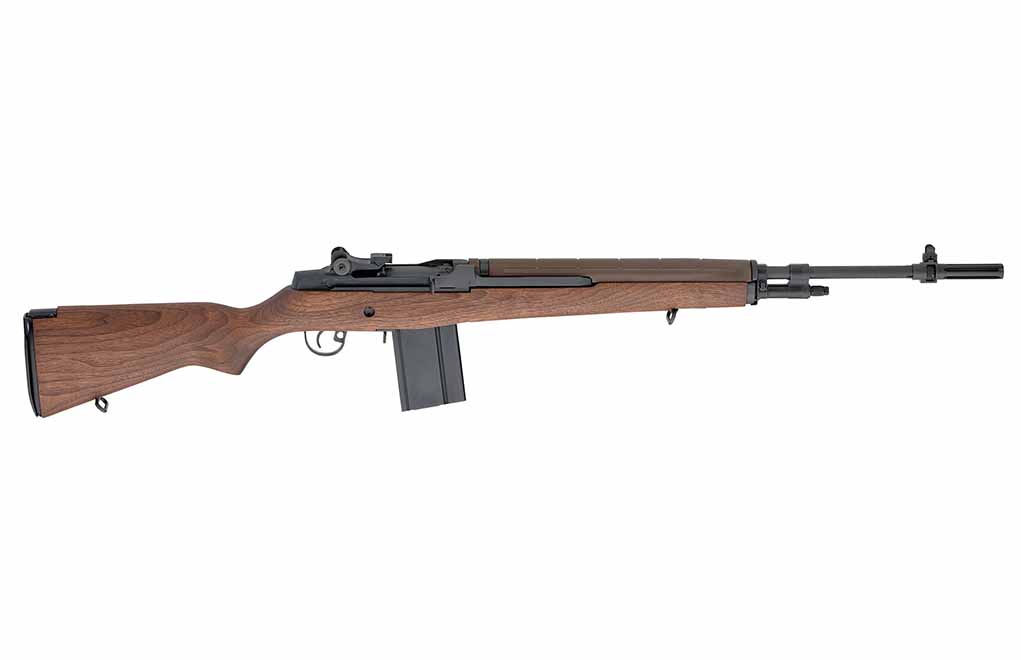
A faithful reproduction of the M14, the M1A standard is the semi-auto rendition Springfield has marketed since 1974. Originally composed of surplus parts, the .308 Win. is now an in-house build, but still right on target with a 22-inch barrel, long birdcage flash suppressor, adjustable rear aperture sight and National Match front sight. You can stay old school with a walnut stock or choose a little more element-friendly composite.
M1A National Match

Match shooters rejoiced when this model came out, loaded up with everything to gun for gold. Competitive upgrades include medium weight match barrel, glass bedded stock, tuned two-stage trigger and .595-inch micro-adjustable hooded aperture rear sight (1/2 MOA per click). Chambered strictly in .308 Win., the rifle is available with a 22-inch carbon steel or stainless steel barrel.
M1A Super Match

Essentially a National Match with one weighty upgrade—a 22-inch Douglas Heavy Match barrel, carbon or stainless steel. The .308 Win.’s six-groove, 1:10 twist bore is push-button rifled, a process only second to cut rifling for uniformity. In addition to barrel material, you can choose between a glass-bedded walnut stock or McMillan fiberglass stock.
M1A Loaded
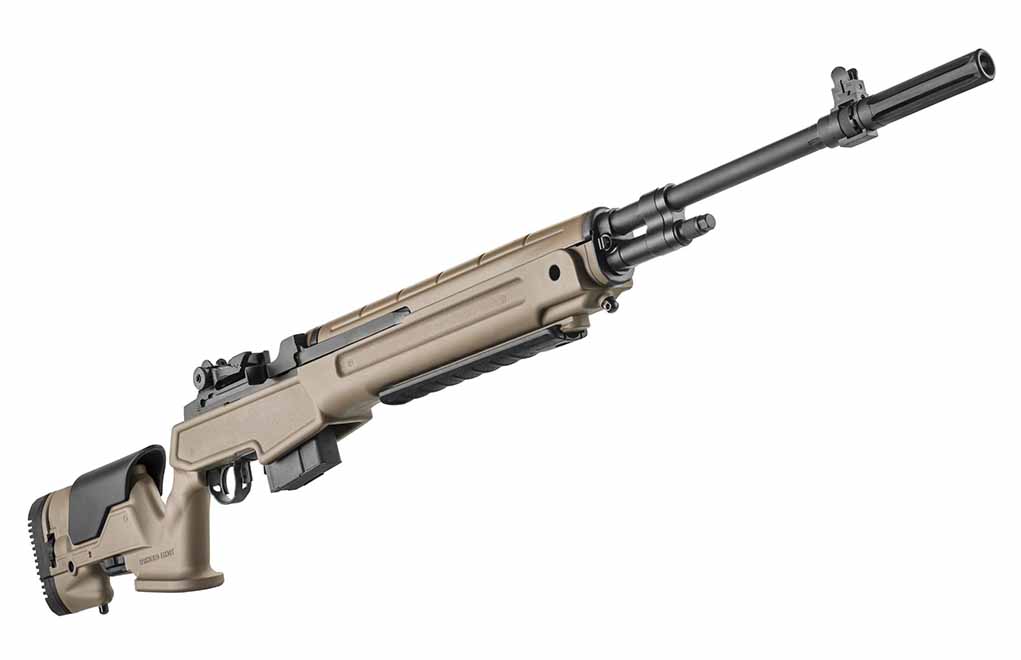
Configured for long-range work, the M1A Loaded offers much of the same accuracy potential as the National Match at a bit more affordable price point. There are also some interesting options in the series, including both .308 Win. and 6.5 Creedmoor chamberings, and fully-adjustable precision stock. Of course, if you want, walnut is still available.
M1A Scout Squad
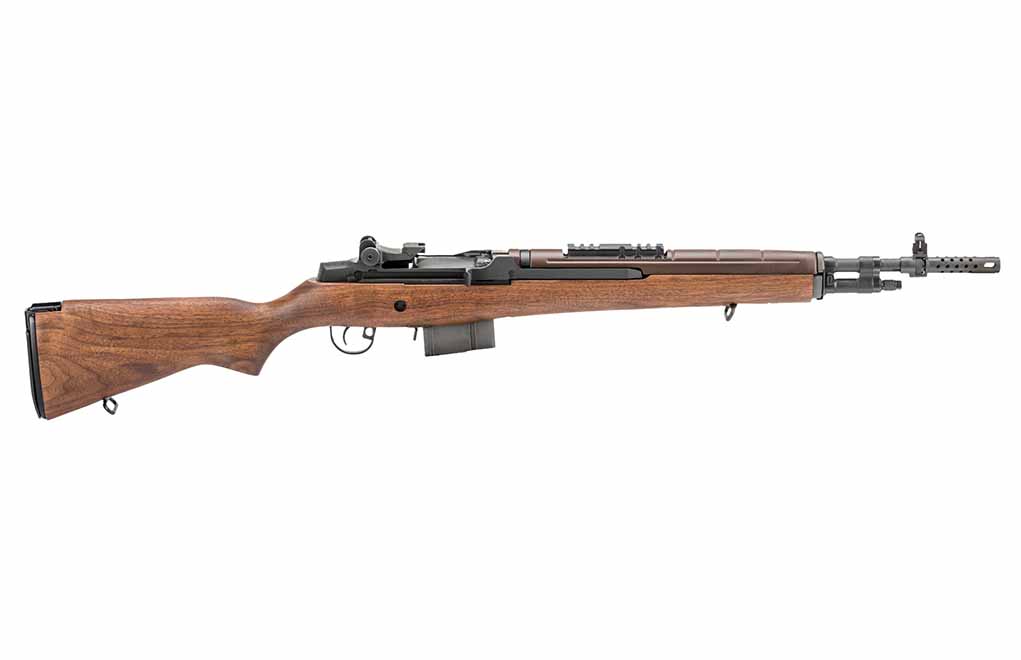
Perhaps not a by-the-book rendition of Col. Jeff Cooper’s scout-rifle concept, the M1A Scout Squad is nonetheless an interesting twist. In addition to trim dimensions, thanks in part to its 18-inch barrel, the .308 has a Picatinny rail to forward mount a scope. Additionally, it’s available with a wood or black composite stock.
M1A SOCOM
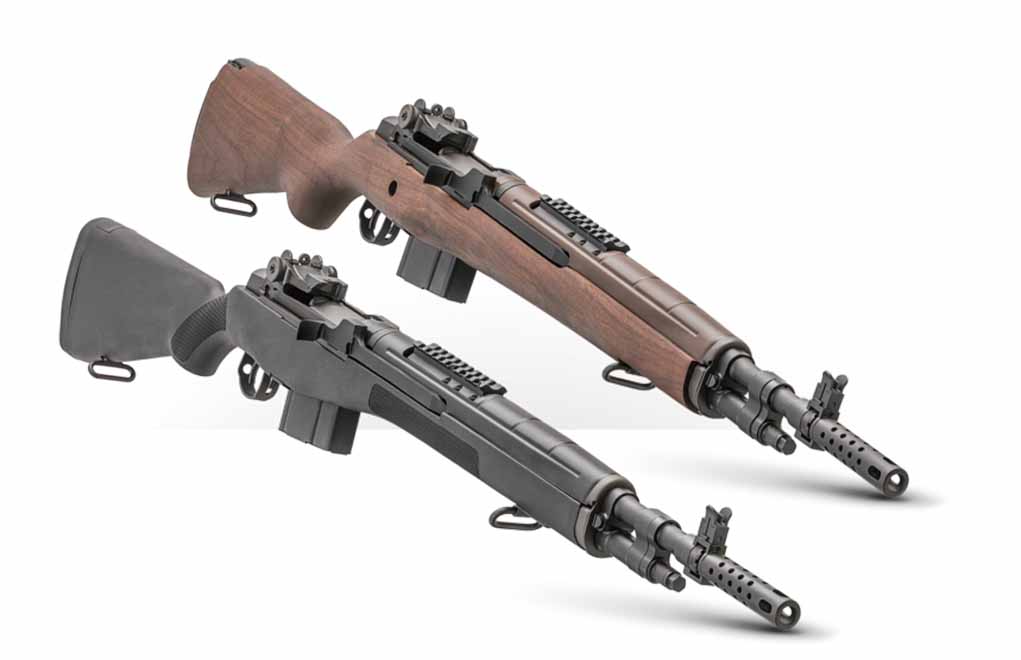
Perhaps the most radical break from the traditional M14 design, the SOCOM makes the “gravel belly” system fit for close quarters. The most abbreviated M1A in the line, the carbine has a terse 16.25-inch barrel, kept short by a radical redesigned break that keeps the .308’s recoil manageable without increasing its footprint. It also comes in some interesting configurations, including an adjustable buttstock model with AK-style grip. More recently, the “Tanker” SOCOM hit the scene, a take on concept Garands of World War II.
Parting Shot
Arguments over whether the M14, therefore the M1A, deserves the title of an all-time great rifle won’t subside anytime soon. It’s a Rorschach test of sorts. Some view it as an overpriced relic, while others see the last great fighting implement. In any case, the rifle certainly improves on an already proven system. It will pick fleas at 500 paces in the right hands, and it’s demonstrated it was battle-worthy 40-years after it was written off. It’s a mixed legacy to be sure, but one any true shooter should make room for in their collection.
For more information on the M1A, please visit springfield-armory.com
More On Springfield Armory:
- Springfield Hellcat
- Springfield XDS
- Springfield Saint
- Sprinfield XDE
- Springfield XDM
- Springfield 911
- Springfield Saint Victor
- Springfield Saint Edge

Next Step: Get your FREE Printable Target Pack
Enhance your shooting precision with our 62 MOA Targets, perfect for rifles and handguns. Crafted in collaboration with Storm Tactical for accuracy and versatility.
Subscribe to the Gun Digest email newsletter and get your downloadable target pack sent straight to your inbox. Stay updated with the latest firearms info in the industry.

![Best Concealed Carry Guns In 2025 [Field Tested] Wilson Combat EDC X9S 1](https://gundigest.com/wp-content/uploads/Wilson-Combat-EDC-X9S-1-324x160.jpg)


![Best 9mm Carbine: Affordable PCCs [Tested] Ruger Carbine Shooting](https://gundigest.com/wp-content/uploads/Ruger-Carbine-Shooting-100x70.jpg)
![Best AR-15: Top Options Available Today [Field Tested] Harrington and Richardson PSA XM177E2 feature](https://gundigest.com/wp-content/uploads/Harrington-and-Richardson-PSA-XM177E2-feature-100x70.jpg)

I look at the M14/M1A as an American muscle car begging to be modernized… I started using the Sage EBR chassis in 2004, and I began replacing those stocks with light weight Blackfeather RS starting 2011. My rifles were all built by Smith Enterprise and they are sub moa accurate in the Blackfeather with a trigger shoe,
So which one did Gary Cooper invent while in prison? 😀
Kudo’s to Springfield Armory for “resurrecting” one of the best weapons to come out of manufacturers like TRW (the most PRIZED of milsurp parts), Winchester, H&R and of course – the U.S. Military’s “Springfield Armory”.
Also keep in mind, there are currently a number of other manufacturers of M-14’s (who can’t call them M-1A’s, because SA has ownership of that name – hence they are called M-14’s – or M-14S): Fulton, LRB, Bula (who took over from James River Armory – who licensed the Rock Ola name),Smith Enterprises. I have one of each in my rack – each (aside from the Springfield), built from scratch on my bench. And both my Springfield Super Match and Hand Built LRB Heavy 22″ (in a JAE Precision Stock) will shoot between .75 & 1″ with match ammo (both shoot .75 with Lake City M119LR).
I tell people you ASSEMBLE an AR – but you BUILD an M-14 – which requires way more skills and tooling to build, than a “LEGO Kit” AR pattern rifle.
Barrels have to be “timed” (to align feed ramps and iron sights as well as the gas system), chambers have to be “finish cut” (in builds with non-chrome lined barrels), bolts have to be hand-lapped for headspace, and Gieselle doesn’t make triggers for them – so trigger groups have to be match conditioned by hand (USGI issues were not, all my builds have match triggers). I have 2 drawers of “M-14 Specific” tools in my bench – and I’m probably one of less than a handful of people in Florida that can actually build one, do barrel swaps, etc..
Perhaps yet another reason why they were replaced – parts interchangeability and ease of field maintenance, as well as reduced loadout weight in firearm and ammo – and, of course – COST.
A select fire M-14 (or any rifle in that caliber) is a BEAR to shoot shouldered in full auto (been there/done that – on one of the few that made it into the NFA Registry). They were “locked out” for most issue during the VN conflict, and (to the best of my knowledge) current “re-issues” in Sage Stocks that were given to SDM’s were also left “locked out”. Most “machine guns” of that caliber were pronge/bipod setups, or hard mounts (and those are a REAL HOOT TO SHOOT too). The caliber (7.62 NATO) is still very viable – and very much in use all over the world.
There are actually a lot more than an “inconspicuous lug” on the receiver, to manufacture a semi-auto version of this rifle – but for the sake brevity – there are many differences in the receivers – which makes a nicely designed an executed on a piece of artwork IMHO.
People will argue all the live-long-day, between forged & cast. Early SA’s were, so-so – new ones are very pretty, as are the cast from Fulton. LRB and Bula are forged – also very pretty. And the VERY LIMITED EXAMPLES of Smith Enterprises (even though Ron can be a dick – HI RON!) are CNC’d from billet – and are very very pretty (I have an example from the first Tempe run – yell at Croc there Ron).
The M-14 “community” is a tight-knit and knowledgable bunch, I’ve made some good friends on the forums.
Sadly – much as a LOVE my collection – they would NOT BE my “first grab” for a run-n-gun scenario. That would go to my SCAR-17 for close/medium engagements), my hand assembled AR-10-Heavy (lap your barrels people) for long engagements (even though it weighs as much as my M-14 JAE) – but my first grab in that caliber would be my IWI Tavor-7 – which scores repeatable hits out to 3/400 in my hands.
Thanks for the write-up, and keeping this still-popular rifle in the public eye…
Rick
I have a question that I have long been confused about. While the M14 was select fire, I have asked a couple of Vets that were issued the rifle early on during their tour in Vietnam and both claimed that their weapon was not select fire and that many were not. Yet articles about the M14 never mention a semi-automatic aka M1A variant in use as a standard issue rifle. Can you clarify?
Hey James,
What you heard was correct, a great many M14s issued in Vietnam were semi-automatic. They were still select-fire, however, they were outfitted with a selector lock that kept them exclusively in semi-automatic. The M14(M) or “Modified” outfitted with an M2 bi-pod, and M14A1 with a straight-line stock and forward and rear pistol grips–all attempts to make the rifle more accurate–had the selector lock removed and were fully automatic. I hope this clarifies.
~Elwood